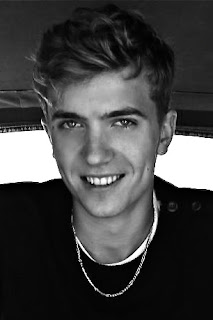To reline the book report on trend forecasting it is crucial to
illustrate what a trend actually is. Because fully understanding this issue is
essential to rightly adapt the methods promoted by The Forecaster´s Handbook, I will use a whole post to do so.
So what is
a trend?
Actually it has not to be physical or aesthetical. The change can also
happen in the minds of human beings or simply through emotions. The people´s
new ecological awareness of the recent years can for example be counted as a
trend, too. A trend is an anomaly which is slightly becoming more common, more
accepted among the people. Oppositely to a style, which only shows the
difference to the status quo, the trend additionally illustrates the direction
into the examined phenomenon might be moving. The word might in this sentence is crucial, because no one can forecast the
future for sure. This compels every company and every strategist to develop
different scenarios.
Scenario
planning is stressed because it is essential to be prepared to react quickly to
any changes happening in this fast changing times in a multi-connected
globalized world. According to these scenarios there can be crafted action
plans giving advice what to do and how to cope with the development if one of
these scenarios suddenly occurs. The company with the most thorough, best
refined and best reflected scenario plans will come out of this new development
as the new strongest actor in the operating field. Like Shell did after the oil
crisis in the 1970´s, as it was the only company prepared even for the
unthinkable scenario of an oil boycott of the OPEC states.
Resuming
the already posted point, that trend forecast is a multi-field science, Biologist
Richard Dawkins compares trends to genes calling them memes. Genes assimilate themselves and change by going through
bodies, memes assimilate themselves
and change by going through brains. Genes as well as memes assimilate, learn and evolve to ensure survival, whether
socially, intellectually, culturally or physically. They do so very time when people
copy attributions of others which are successful and highly valued by the
surrounding society.
Trends
spread in a different speed due to different factors like the price of the
product, whether it is actually an attitude in people´s minds or something physical
and so on. But regarding the society, how do trends spread or as trend
forecasters prefer to say: go viral?
Sociologist
Everett M. Rogers developed the Diffusion
of Innovation 40 years ago and it is still used in this field of science.
The society is split up into five groups, namely the Innovators, who do not necessarily create the trend but are the
first ones to discover it. Early Adopters,
usually close friends of the Innovators
and socially better connected, adapt the newly found trend as the first
persons. These two heterophilous groups, encompassing people with the aim to be
different, are very interesting for trend forecasters, because usually they are
needed to gain the critical mass a trend needs to start spreading.
The Early Majority starts using the trend
when it already spread but still is not known to everyone, while the Late Majority, a more skeptical part of
the population, starts settling on the trend when it is really proved in the
exercise through other groups. A trend adapted by the last and least changing
stratum of society, the Laggards, indicates that the trend is already gone and
rather common habit than new pattern, hence a good trend forecaster should have
already scented the next trend.
Based on The Trend Forecaster´s Handbook
by Martin Raymond
Matthäus




















